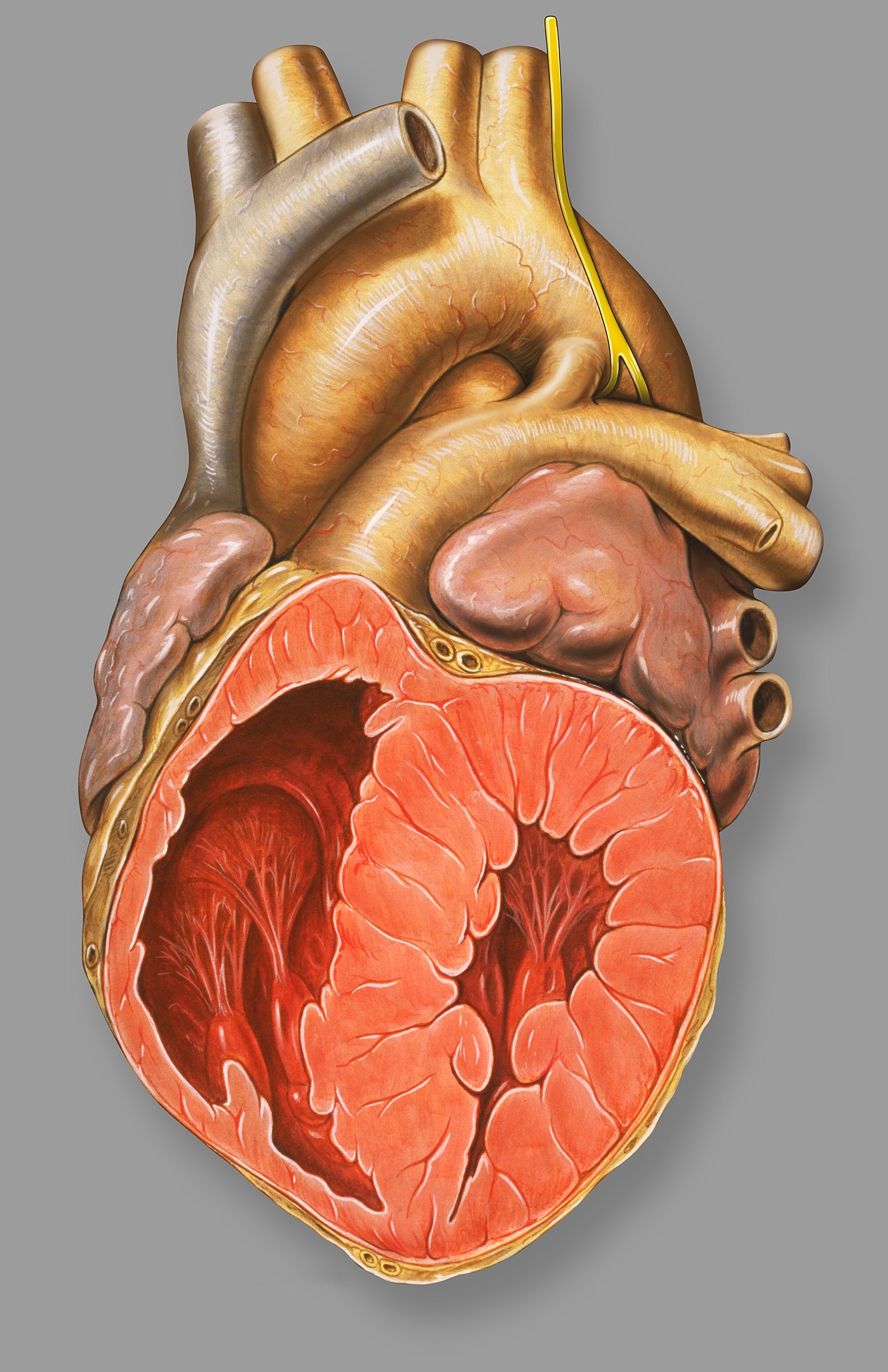Playlist
Show Playlist
Hide Playlist
Patent Ductus Arteriosus (PDA)
-
Slides Obstructive heart disease and detour defects.pdf
-
Reference List Pediatric Nursing.pdf
-
Download Lecture Overview
00:01 Let's shift gears here and talk instead of that problems, obstructive heart disease, let's talk about detour defects. 00:08 We call them detour defects because the blood is coming out of the left side. 00:12 It's supposed to go to the body - no, it has to take a detour back to the right side. 00:18 The most common probably or one of the most common, is the patent ductus arteriosus. 00:24 This happens at birth. 00:26 Remember, that ductus is open, that ductus in utero was providing a normal conduit for blood flow. 00:33 When the baby is born, they take their first breath, oxygen fills that blood, and that oxygen is the initiation of a trigger to cause the muscle to constrict that PDA and close it off - eventually resulting in the ligamentum arteriosum. 00:51 In congenital heart disease, remember, in most congenital heart disease we need that PDA open to allow a conduit for blood to flow either from the left side to the right side if I have right sided problems, or from the right side to the left side if I have left sided problems. 01:10 So that PDA is a valuable tool to keep the child alive until a definitive surgical repair can be made. 01:17 For children, we want to keep the PDA open, we're going to use prostaglandins. 01:23 But if the PDA is the only problem, you want to close it because over time you're going to start to get more and more left to right flow and you're going to start getting right-sided strain. 01:37 To close it, you'll use indomethacin, or you'll ligate it, and we'll talk about that in a little bit. 01:45 How does a PDA present? It depends when you picked it up. 01:50 In neonates with the PDA, with a lot of blood flow, it's pretty severe. 01:55 They may have poor feeding. 01:57 You may notice a systolic or continuous murmur. 02:01 A high-yeild fact on a exam might be a washing machine murmur. 02:06 I'll be honest, I've never heard that. 02:10 In fact, I've made a diagnosis of a PDA, maybe three weeks ago, and I mostly heard the systolic component. 02:16 But on a test, they love using the word "washing machine." This patient may have tachypnea. 02:21 Remember, the blood's going to be going left to right, you'll have pulmonary overflow and some congestion, and that can cause tachypnea. 02:28 These patients may also have bounding pulses. 02:30 Bounding because the diastolic pressure is lower - almost like there's a little bit of backflow. 02:37 In an older child, where they have been doing okay, it hasn't been such a bad PDA, they've been able to get through the neonatal period, they may start developing poor growth as the heart is really struggling to keep up with things. 02:50 that's when you again notice that machinery or washing machine murmur. 02:55 These patients may also have dyspnea, again from the pulmonary overflow, and again those bounding pulses. 03:02 If they've made it through childhood and into adolescence with a PDA, they may start getting into big trouble. 03:09 Eisenmenger's condition is when the right ventricle has been working so hard with this blood coming back to, with this over circulation, that now the right-sided pressures are actually eclipsing the left-sided pressures. 03:24 Now the blood, instead of going left to right, starts going right to left. 03:28 If a patient has Eisenmenger's, they're in a lot of trouble and probably need a heart transplant. 03:34 You may or may not hear the murmur at this point. 03:36 They will have dsypnea and they will be more likely to have normal pulses. 03:42 Let's go back to closure. 03:46 If I need to close that PDA, I'm going to use an NSAID because cyclooxygenase is part of the process here, so we're going to use indomethacin, or in some centers, ibuprofen to close that PDA. 04:02 If we failed to close it - usually through two rounds of indomethacin in most neonatal units - the surgeons will proceed to a surgical closure. 04:14 There's a clever test question that might come up during a test about PDA and about surgical closure. 04:22 When the surgeons are closing this in the neonatal period, they're going to go in - it's an open-heart surgery - and they're going to put a little clip, and they're going to clip that patent ductus arteriosus. 04:32 Running right near that ductus arteriosus is the recurrent laryngeal nerve. 04:38 In a baby who's had a PDA ligation, who presents with stridor, the cause of that stridor is a paralyis of the recurrent laryngeal nerve resulting in vocal cord paralysis and hand stridor. 04:52 So a stridorous baby after a PDA ligation, they injured the recurrent laryngeal nerve.
About the Lecture
The lecture Patent Ductus Arteriosus (PDA) by Brian Alverson, MD is from the course Pediatric Cardiology.
Included Quiz Questions
Which of the following is the most likely diagnosis in an infant with surgical closure of the patent ductus arteriosus and post surgical stridor?
- Injury to the laryngeal nerve
- Thyroid storm
- Retropharyngeal abscess
- Stroke
- Epiglottitis
Which of the following medications should be administered to keep the patent ductus arteriosus open?
- Prostaglandin E1
- Indomethacin
- Prednisolone
- Montelukast
- Atropine
Customer reviews
5,0 of 5 stars
| 5 Stars |
|
1 |
| 4 Stars |
|
0 |
| 3 Stars |
|
0 |
| 2 Stars |
|
0 |
| 1 Star |
|
0 |
I know I'm keeping saying "excellent lectures". That's the way I feel I about them. Thank you!





